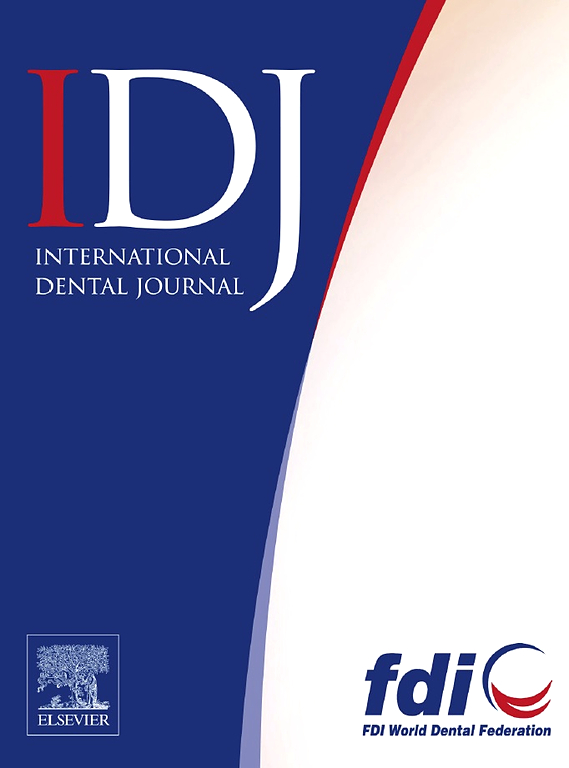非smc凝血素I复合体D2亚基上调对口腔鳞状细胞癌预后的影响
IF 3.2
3区 医学
Q1 DENTISTRY, ORAL SURGERY & MEDICINE
引用次数: 0
摘要
目的探讨非smc凝血素I复合体亚基D2 (NCAPD2)对口腔鳞状细胞癌(OSCC)预后的影响及其与OSCC的相关性。方法从肿瘤基因组图谱(Cancer Genome Atlas, TCGA)和基因表达图谱(gene expression Omnibus, GEO)中收集OSCC和正常组织的NCAPD2基因表达谱。采用实时定量聚合酶链反应(RT-qPCR)对OSCC细胞株和正常上皮细胞株进行初步验证。除EdU外,我们还通过细胞划痕和transwell实验来评估NCAPD2沉默作用下OSCC细胞株的增殖、迁移和侵袭情况。此外,利用免疫组织化学(IHC)染色检测74例OSCC标本中NCAPD2和肿瘤相关标志物的表达。最后通过Kaplan-Meier分析评价NCAPD2对OSCC预后的影响。结果NCAPD2在OSCC组织中的表达明显高于正常组织。抑制NCAPD2可以减少OSCC细胞系的增殖和迁移,抑制这些细胞的侵袭。免疫组化染色结果显示,NCAPD2在OSCC组织中的高表达与T分期、Ki67表达、发病部位呈正相关。Kaplan-Meier分析结果证实,NCAPD2表达上调与OSCC患者总生存期(OS)较差显著相关。结论ncapd2是OSCC不良预后的潜在分子标志物,有望成为OSCC治疗的靶点。本文章由计算机程序翻译,如有差异,请以英文原文为准。
Impact of Non-SMC Condensin I Complex Subunit D2 Upregulation on Oral Squamous Cell Carcinoma Prognosis
Objective
To explore the influence of non-SMC condensin I complex subunit D2 (NCAPD2) on the prognosis of oral squamous cell carcinoma (OSCC) and the correlation between NCAPD2 and OSCC.
Methods
In this study, NCAPD2 gene expression profiles of OSCC and normal tissues were collected from the Cancer Genome Atlas (TCGA) and Gene Expression Omnibus (GEO). The real-time quantitative polymerase chain reaction (RT-qPCR) was employed to preliminarily validate OSCC cell strains and normal epithelial cell strains. Besides EdU, cell scratch, and transwell assays were performed to assess the proliferation, migration, and invasion of OSCC cell strains with the silence of NCAPD2. Moreover, immunohistochemistry (IHC) staining was utilised to measure the expression of NCAPD2 and tumour-related markers in 74 OSCC specimens. Finally, the Kaplan-Meier analysis was performed to evaluate the influence of NCAPD2 in the prognosis of OSCC.
Results
The expression of NCAPD2 in OSCC tissues was higher than that in normal tissues. Inhibiting NCAPD2 can reduce the proliferation and migration of OSCC cell lines and inhibit the invasion of these cells. The IHC staining results indicated that the high expression of NCAPD2 in OSCC tissues was positively correlated with T stages, Ki67 expression, and affected sites. The Kaplan-Meier analysis results validated that the up-regulated expression of NCAPD2 was significantly correlated with the poor overall survival (OS) of OSCC patients.
Conclusion
NCAPD2 is a potential molecular marker for the poor prognosis of OSCC, and it is expected to become a target for the treatment of this carcinoma.
求助全文
通过发布文献求助,成功后即可免费获取论文全文。
去求助
来源期刊

International dental journal
医学-牙科与口腔外科
CiteScore
4.80
自引率
6.10%
发文量
159
审稿时长
63 days
期刊介绍:
The International Dental Journal features peer-reviewed, scientific articles relevant to international oral health issues, as well as practical, informative articles aimed at clinicians.
 求助内容:
求助内容: 应助结果提醒方式:
应助结果提醒方式:


